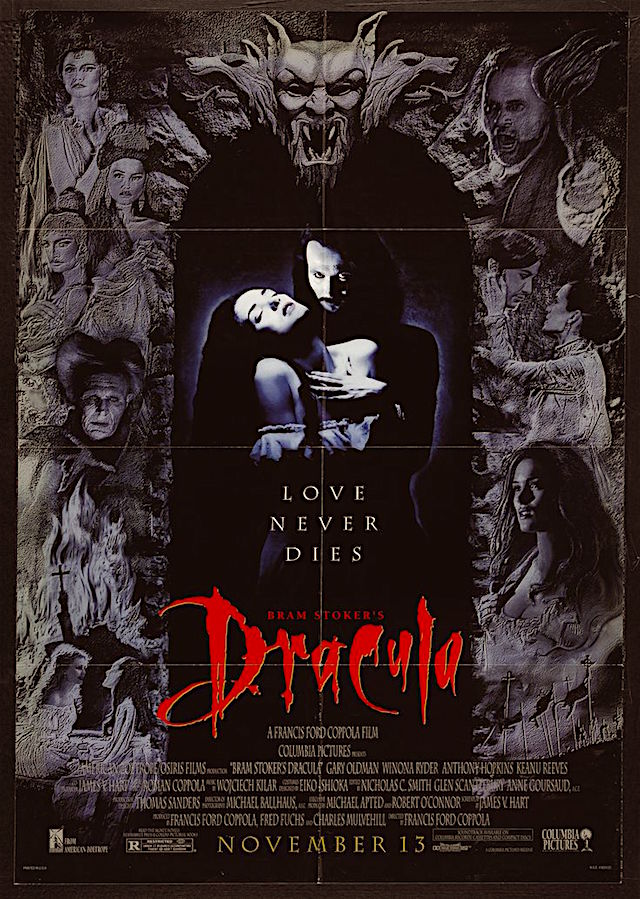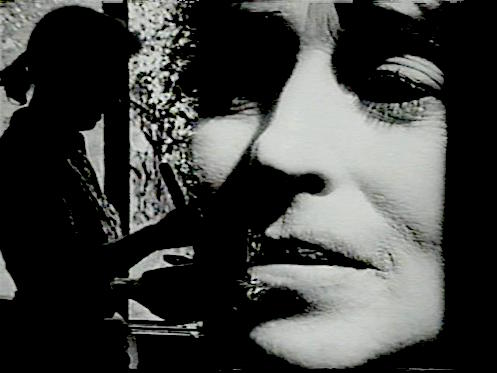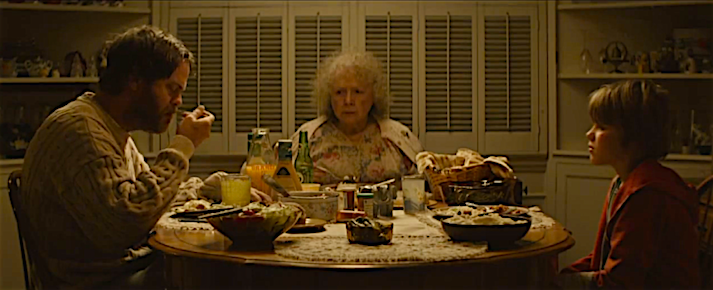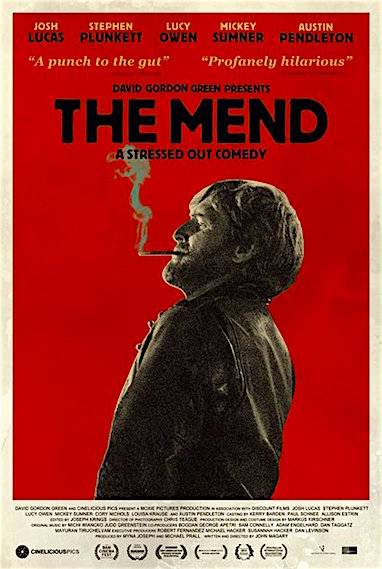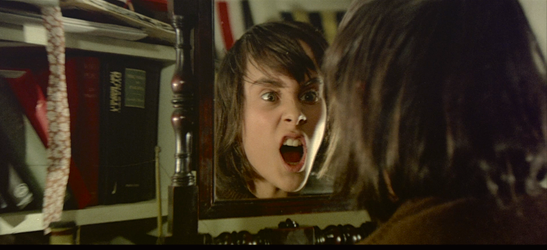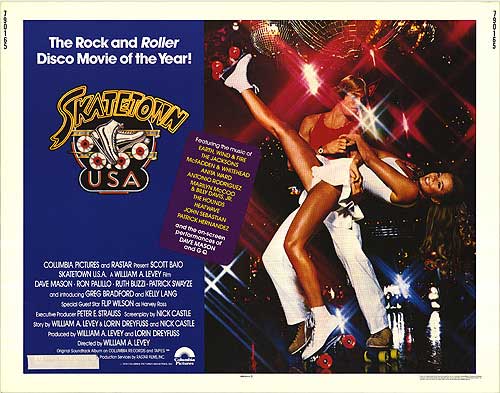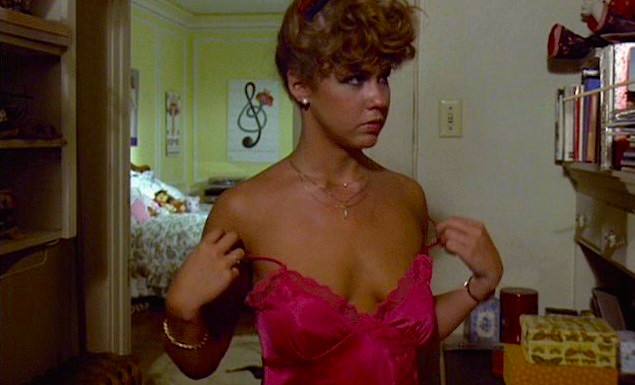A couple of weeks ago I became aware of something called CineSecrets. I was on Twitter and I saw a post from http://www.audienceseverywhere.net shouting out for individuals to freely share their CineSecrets as a celebration of Honesty Day. I really liked this idea, but the problem is I do not have secrets. I most especially do not have secrets regarding cinema and/or movies. I will freely admit that I am a total Movie Snob, but I also adore a good number of films that are often deeply bad. Quite seriously, I do love some really crap movies. I have no CineSecrets. I mentioned this to a friend who disagreed with me immediately. My friend pointed out that I have a great number of CineSecrets.
She quickly listed a number of movies I deeply love which most of the world hates. But the thing is I make no secret of these profoundly bad films that I love. Sometimes a film can be so bad that it works its way around to being brilliant. Once again, she took exception with my comment. Apparently I do not share my joy/pleasure of these movies via my blog, http://letterboxd.com , Twitter, Facebook or even in conversation. Of course I did protest:
“Wait a minute, I’ve written about The Eyes of Laura Mars and Mommie Dearest at length!”
I was informed that these two movies do not count. I didn’t know it, but I guess these two movies are considered Classic Cool Bad Movies. Really? They are now considered cool? Soon I found myself in corner…
“Have you ever written about your love of It’s Pat?”
No. I haven’t. However in my defense, the only reason I haven’t written about it or a number of movies is because I have never thought anyone would want to read anything I might write about Julia Sweeney’s cineplex flop. A flop that I saw at a cineplex on the opening day. My eyes were glued to the screen and my mouth agape in confusion till the bitter end.
I do not even know how many times I’ve watched Adam Bernstein’s film version of Sweeney’s SNL character, Pat. The concept of Pat as a short late night skit was really funny. Well, funny for at least 3 skits. The idea of stretching an old skit into a 77 minute movie was odd even in the early 1990’s. Yes, It’s Pat is 77 minutes long. I know the running time just as I know every line of the ill-fated movie by heart.

Kathy Griffin can’t decide if her creepy neighbor is hitting on her or simply stalking her. Neither do we…
Kathy Griffin and Julia Sweeney
It’s Pat
Adam Bernstein, 1994
Cinematography | Jeff Jur
It’s Pat was actually the 5th movie to be produced by SNL Films. It followed some very successful films including the two Wayne’s World movies. It’s Pat had a budget of $10,000,000.00 but just barely made $60,000.00 at the box office. It was a flop of epic proportions. One of the aspects that made it singularly unique among the SNL films is that it presented itself as something far smarter than it actually was. Sure there were plenty of gross-out jokes, but it featured a cast of truly talented comedic actors. It never feels like anyone on the screen isn’t thrilled to be there. Julia Sweeney’s androgynous character is intended for awkward moments and strange character quirks and noises. However, It’s Pat wears that thin within the first ten minutes.
The reason I found myself at the cineplex on that fateful Friday early afternoon was because I ended up having the day off. The reason I chose to see It’s Pat was because I had heard that one of my then favorite bands was featured in the film. If you were around in the early 1990’s and liked cool indie-rock you were aware of Gene and Dean Ween. Ween quickly eclipsed Bongwater as Kramer’s Shimmy Disc label’s premiere band. A profoundly strange band that brought forward Lo-Fi Psychedelic rock combined with a twisted stoner sense of humor. The thing about Ween was and remains that while the band never seems to take itself seriously, they are a great band.
I had been won over by their 1991 second album, POD. The original Shimmy Disc release included songs like Strap On That Jammymac, Demon Sweat, Can U Smell The Waste?, Awesome Sound, She Fucks Me, Pork Roll Egg And Cheese and Molly! (a song in which Gene & Dean simply sing/speak the name “Molly” over and over. But the album’s “Hit Single” was Pollo Asado.
“...Let me start of with a basket of chips. Then move on to the pollo Asado taco. I would like two pollo assado tacos with one beef chimichanga.
On the chimichanga, I would like a side of sour cream. I would like tomatoes and onions on my casadia.
For the dessert I would like the… I would like extra cinnamon.
Do you make guacamole?
Yes, I do make guacamole.
Uh, I would like a side of guacamole on my Tostitos. I like to dip the Tositos in the guacamole.
Can I get a basket, I told you about a basket of chips. I would like a large iced-tea, 2, uh, 2 large iced-teas. Ok, that’ll be $16.07.
Out of $20? Ok, $16.07’s your change.” — Pollo Asado by Gene & Dean Ween, 1991
It must be heard to fully appreciate, but I felt confident that if Ween were involved — It’s Pat must have something to offer. From my perspective it offered far more than I had bargained for. The truth is I had figured it might make me laugh a couple of times. It’s Pat made and continues to make me laugh to this day. It is one of the most clunky and awkward movies I’ve ever seen. During my in cinema screening the other members of the audience were silent. Many left before the film’s mid-point. After the first ten minutes or so I began to chuckle at the impossibly silly line and scenarios. David Foley’s Chris becomes Pat‘s ideal love and soulmate. Of course we never know if one if male, the other female or possibly both of the same sex. This is intended to be the film’s main plot point — or lack thereof. The late Charlie Rocket plays Pat‘s neighbor who begins psychotically obsessed with the title character. He eats scenery like nobody’s business. Poor Kathy Najimy works her scenes well beyond what they are worth. She is a mass of panic and worry every time Pat enters her convenience store. Often murmuring comments like “I’m now in Hell.” or “Please just leave.” “Oh Sweet God!”

David Foley’s Chris and Sweeney’s Pat find love…
It’s Pat
Adam Bernstein, 1994
Cinematography | Jeff Jur
Ween are fully present and accounted for and offer the title character what appears to be a big musical break! Turns out Ween are not so interested in Pat‘s tuba playing skills as they are in, well, Pat. While on stage with Ween poor Pat ends up being raised up above the rockin‘ cool audience without clothing. We are treated to a back view and never know what they see. It is a confidently timed bit that falls flat on its face. And yet it makes me laugh.
By this time in 1994 Ween had actually managed to move into the mainstream. It’s hard to know if they lost their way due to the timing of the movie’s release. I doubt it. Like everyone else in the movie, Gene and Dean seem to be having a great time. This is the thing that I just have to love about It’s Pat: it is so clearly confident that everything happening and being said is hysterically funny. The bad jokes quickly turn themselves into a sort of Anti-Comedy that I find impossible to resist.
Ween are still rocking onwards. Adam Bernstein may have lost his bid to be a feature filmmaker but he has gone on to be a valued TV director. Julia Sweeney had an odd cinematic year in 1994. She co-wrote and starred in It’s Pat at almost the same time as appearing as Harvey Keitel’s cool girlfriend in Tarantino’s Pulp Fiction. Her life would take a tragic and challenging turn soon after, but she returned in victory with a brilliant one-woman show, God Said ‘Ha!’, that would also be turned into a feature film.
I can’t be alone in my love for It’s Pat. It is still available in DVD format and for VOD purchase / rental from iTunes. I stand by it. It’s Pat is so very bad it rises to ridiculous levels of off-kilter brilliance.
The “success” of Francis Ford Coppola’s 1992 Epic re-working of Bram Stoker’s Dracula might be debatable in some quarters. It is my opinion that this highly stylized and largely self-financed movie is a beautiful mess of a movie. Critics were surprisingly kind and this odd movie somehow managed to pull in over 5 times what it cost to make. No way we look back at it, Coppola’s movie was a major box office hit. Very little is actually “right” about this movie, but when it is “correct” it is exceptional. Sadly, when it is bad — and, it is truly bad most of the time — it actually manages to be somehow audaciously interesting. There are more than a few painfully comical moments co-mingled with much that fails to even make much sense. For a movie that I didn’t really like — I sure enjoyed and continue to enjoy it.
Coppola can’t seem decide if he wants to make a Gothic Horror Movie or an overtly silly supernatural romance. Winona Ryder is about as 19th Century as an iPhone. She seems lost most of the time. Her attempts at erotic desire feel about as heated as a mall girl who has found the perfect skirt. Yet there is a certain level of passion conveyed that sometimes starts to feel genuine. Anthony Hopkins seems to be on the verge of a heart attack throughout the movie. At times one suspects he might start chewing on his fellow actors. In many ways he seems the creepiest monster. Tom Waits shows up and eats insects like they were gin-filled chocolates. It is not he that is bad here, the film lets him down. Renfield is never actually explained or developed. He just sort of shows up and seems to be blessed with some sort of supernatural power — or is it just a telepathic connection to his Master? Hard to tell. But Waits has been filmed and edited for Mel Brooks instead of the majestic film he is in.

Dude! Score!! Hot Vampyre Wives!!!
Keanu Reeves
Bram Stoker’s Dracula
Francis Ford Coppola, 1992
Cinematography | Michael Ballhaus
But The Worst Performance of 1992 belongs to Keanu Reeves. It really doesn’t feel fair to be too hard on Mr. Reeves. Clearly miscast, he seems to be doing his best. His accent comes and goes, his hair is totally 1991 stylin’ and it inconsistently appears to be black and then suddenly gray the next. Keanu’s hair color is so inconsistent, it becomes consistent. Wooden and oddly overly excited all at the same time, he actually becomes the funnest player in the movie. The acting is all over the map here save two featured actors: Sadie Frost as Lucy Westenra and Gary Oldman as our Count Dracula.

Sadie Frost gets everything perfect, but poor Miss. Westenra has never been quite this Satanic!
Sadie Frost
Bram Stoker’s Dracula
Francis Ford Coppola, 1992
Cinematography | Michael Ballhaus
If Ryder seems to be at odds with the film’s eroticism, Sadie Frost is more than ready to fill in those erotica shoes. Frost’s performance is just about perfect. Her Miss. Westenra may not be much like what Stoker imagined, but her sexual desires are busting out all over! Her transformation from High Society Belle to Erotic Satanic Bride-From-Hell is about as dark as it can get. To her credit, Frost seems the most able to keep up with Coppola’s often schizophrenic script. This script changes tone and moods faster than sets (and there are a whole lotta sets going down!) — She perfectly matches her half of the film. If only the whole movie had been blessed with this sort of Erotic Nightmare quality! Sadly, Sadie Frost is the only actor who actually gets the opportunity to fully grasp the Full-On Goth Groove of this strange big movie.

Just offer me your sex. You know you want it…
Gary Oldman
Bram Stoker’s Dracula
Francis Ford Coppola, 1992
Cinematography | Michael Ballhaus
As good as she is, Sadie Frost pales in comparison to the film’s most valuable player: Gary Oldman. Though for this film I almost feel like he should be referred to as Gary FUCKING Oldman. As is his talent, Oldman fully embodies the title character. The problem is that he is required to constantly shape-shift to suit Coppola’s confused vision. When he is meant to be vile and evil — he is. As the animalistic vampire roaming about the decaying mansion, he is perfectly goulish. Despite the odd wig choice, Oldman rises above it. He also is clearly going to have a bit of fun. His scary Dracula is dementedly sadistic but always with a bit of a wink. Keanu Reeves is like a limp piece of cheap wood when sharing the screen with Oldman in whatever style/costume he is given. Our vampire is soon a true dandy-boy — luxurious long hair, cool specs and a tightly tailored suit. It is hard to know if this version of Dracula belongs to Coppola’s world or to that of Prince video. And of course we also see Oldman as a blood hungry soldier. It doesn’t matter how silly it all gets, this is a truly brilliant performance from one of the most skilled actors of all time.
Despite running over 2 hours, this movie is fast paced. It is also incredibly well designed and Michael Ballhaus frames it all in a consistently stunning manner. Bram Stoker’s Dracula may not be very scary, sexy or even sensical, but it is absolutely beautiful to look at. What the film misses is made up for by the style in which it never manages to achieve anything it seems set to do. This movie is a gorgeous mistake. Sadly it is never fully satisfactory. What brings me back to it time and time again is the passionate way in which Coppola films his uneven take on Bram Stoker. There is nothing smart about this movie, but it is an oddly entertaining sort of cinematic train wreck.

Oh, he’s just gotta get him some Keanu-blood!
Keanu Reeves contemplates his accent as Gary Oldman licks the straight razor.
Bram Stoker’s Dracula
Francis Ford Coppola, 1992
Cinematography | Michael Ballhaus
I should add that some people really think this is a good movie. I can’t defend that assertion, but it is lovely and often unintentionally funny. A couple of years ago Sony actually remastered this film for blu-ray. I secured my copy as soon as possible. You should, too. Another of my favorite Cinematic Guilty Pleasures is a lot older and a lot worse! Sadly, I discovered this movie really late in the game of life — but once I found it, there was no going back. Never mind the fact that Diana Ross decided to follow-up her successful turn as Billie Holiday in Lady Sings The Blues with a glam take on success, her beauty, her taste as a fashion designer and Norman Bates in pants so tight it hurts to see him — but she did. Yes, Diana Ross followed up her Oscar nominated turn with Berry Gordy’s mind-blowing Mahogany!

“Success is nothing without someone you love to share it with.”
And the World of 1970’s Fashion would never be the same.
Miss. Ross is
MAHOGANY
Berry Gordy, 1975
Yes, I intentionally uploaded a huge image of 1975’s movie poster for Berry Gordy’s Mahogany. I had no choice. This was and remains a big ass cinematic mess worthy of praise and love. Berry Gordy’s horrifyingly funny cinematic error offers poor Miss. Ross as an ambitious young would-be fashion designer who must climb the depraved, but totally glamorous, ladder as Super Model before she can achieve superstar success. We cringe as she is forced into awkward situations with Anthony Perkins. Playing a celebrated fashion photographer, Perkins is once again cast as Psycho with a very dangerous camera instead of a knife. Apparently sewn into his immaculately pressed jeans, he is obsessed with Mahogany. Well, but who wouldn’t be? Billy Dee Williams is present as a safer boy-toy. The problem is Williams’ is playing a slick brotha out to save the world via the upstanding and moral world of politics. …in Chicago. He might be smooth in the sack, but he ain’t got no cool fashion soul! He simply is not cool enough for our soon-to-be-Super-Model! You know that Miss. Ross is destined for Model Success by the way she likes to spin around in front of cameras squealing “Weeeeee!”

“Give it to me, baby!” Anthony Perkins / Diana Ross Mahogany Berry Gordy, 1975 Cinematography | David Watkin
“Give it to me, baby!”
Anthony Perkins / Diana Ross
Mahogany
Berry Gordy, 1975
Cinematography | David Watkin
But things take a quick and savage turn when Mahogany must fight against those who would steal her privacy and the meanies who allow her success to go to her head — which is only just barely supported by her painfully thin frame. Seriously, Miss. Ross actually goes topless for about 25 seconds. 1975 Michael Jackson had bigger breasts. She ends up getting a little too down at a depraved Fashion Party and begins to pour candle wax on her body. Later when poor Billy Dee tries to woo Mahogany back to his ethically correct world of Chicago politics, she readies herself for yet another close-up and screeches:
“ The men love me, the women love me, the children love me… You’re just jealous Brian ’cause no one loves you. I’m somebody! They love me! They want me! They want Mahogany!”

“Must I do everything myself!?!?!”
Yes. Diana Ross actually bites at air and writhes about in anger when people fail to get her stunning designs exactly as she sees them in her head.
Diana Ross
Mahogany Berry Gordy, 1975 Cinematography | David Watkin
Actually, I might have that quote a bit jumbled. I’m going off my memory. The bottomline is that I’ve yet to watch this movie when this scene doesn’t cause an entire room into laughter and gleeful applause. Perkins’ crazy photographer decides he wants to capture “fear” in a fashion shoot. This leads to a crazy scene in which Miss. Ross must model-mug furiously will trying to take control of the car which Perkins is driving with insane precession. Cut to our Mahogany covered in plaster and bandages. But fear not, she is in full make-up. She is lost. She knows not where she is going to…

Miss. Ross designed this dress herself! Weeeee! Everybody wants one!
Diana Ross
Mahogany
Berry Gordy, 1975 Cinematography | David Watkin
Equally uncomfortable is the fact that Diana Ross saw this movie as chance to show off her personal “fashion design” brilliance. Yes, she personally designs all of the fashion monstrosities that appear on the screen. This movie had a big hit song. It’s a nice song, but if you see this movie you will be ready to shoot anyone who tries to make you listen to it again. Millions of Mahogany fans were sent into a depression when Miss. Ross pulled a Super Diva and actually paid to hold on printed DVD’s of the movie hostage. Apparently Diana did not want this remastered DVD to find its way to release. Eventually she gave up and Paramount secured the warehouse of DVD’s and released them to the masses. Those of us who are smart grabbed our copies as soon as possible. I suggest you do the same. Mahogany is so profoundly bad it is exceptionally fun to watch!
The other bad movie I choose to love and honor is Kathryn Bigelow’s box office champion, Point Break! This 1991 movie is much loved. I love it. I watch it all the time. But it is terrible. Come on. You know that it is. I really have nothing further to say except: Back off Warchild, seriously.

“You want me so bad, its like acid in your mouth.”
Keanu Reeves & Patrick Swayze
POINT BREAK
Kathryn Bigelow, 1991




